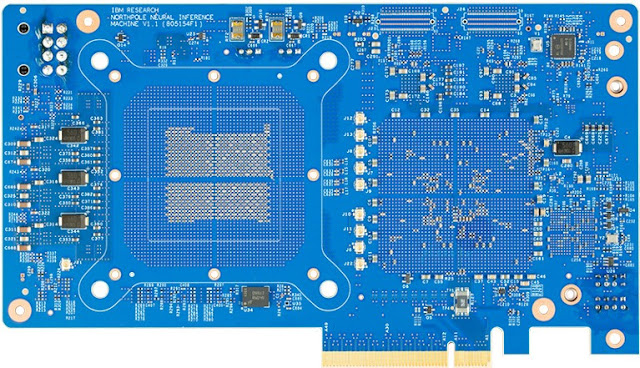In a striking leap forward for AI technology, IBM's San Jose researchers have introduced the NorthPole processor chip, a brain-akin innovation poised to redefine energy efficiency and processing speed in artificial intelligence.
IBM's game-changing chip minimizes dependency on external memory access, allowing for swifter task executions, including image recognition, while ensuring remarkable energy conservation. Damien Querlioz, a prominent nanoelectronics specialist at the University of Paris-Saclay, remarks on the chip's exceptional energy optimization, predicting the paper's potential to transform standard computer architectural perceptions.
At its core, NorthPole utilizes neural networks, facilitating pattern recognition in layered data sequences. While many processors efficiently manage these operations, the majority continually resort to external RAM during layer computations, a process that inevitably introduces lags known as the Von Neumann bottleneck. This bottleneck, named after visionary mathematician John von Neumann, stands as a prime cause of operational slowdowns, particularly in AI-driven tasks.
Recognizing the Von Neumann bottleneck's role in computational and energy inefficiencies, Dharmendra Modha, IBM computer engineer and study contributor, highlights the NorthPole's unique construct. Comprising 256 integrated computing units, each with its intrinsic memory, the chip actively addresses and diminishes the Von Neumann bottleneck. Modha, overseeing brain-mimetic computing at IBM's Almaden research hub, further points to the human cerebral cortex's white-matter connections as the architectural inspiration behind these interconnected cores.
By marrying a series of previously independent design strategies, NorthPole outperforms contemporary AI systems in benchmark image recognition tests, all the while consuming merely 20% of their energy. When factoring in the most advanced production techniques, NorthPole's efficiency could potentially surpass current models by a staggering 25-fold.
However, despite its impressive capabilities, NorthPole's 224MB RAM falls short of accommodating expansive language models, such as those fueling the ChatGPT chatbot. Plus, the chip exclusively runs predetermined neural networks, demanding separate machine-based pre-training. Nevertheless, the authors suggest NorthPole's architecture could be a boon for time-sensitive operations, like autonomous vehicles.
Distinguishing itself from peers, NorthPole positions its memory components adjacent to core computing elements. Concurrently, other scientists are exploring ground-breaking innovations employing novel materials and production techniques. These methods enable memory modules to independently conduct computations, potentially enhancing speed and proficiency.
Further spotlighting the landscape's evolving nature, last month witnessed the debut of a chip utilizing in-memory operations through memristors—elements oscillating between resistor and conductor states. Bin Gao, a co-author of the memristor research from Tsinghua University, Beijing, acknowledges the promising trajectory of both IBM's venture and theirs.
In parallel, various teams, inclusive of an IBM division in Zurich, are pioneering information storage through circuit element's crystal structure alterations. As the tech world watches closely, it remains speculative whether these avant-garde methodologies will prove economically scalable.





0 Comments